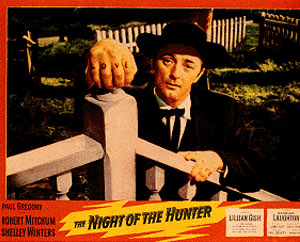Long lines at airport security checkpoints are no surprise, but not all
lines are created equal. Conor Dougherty in the
Wall Street Journal (subscription required) points to some excellent shortcuts and counterintuitive strategies for getting through security faster.
The common theme is to find security checkpoints that are not located
immediately behind the check-in counters, or that are closer to the
smaller carriers' counters. This will only work if the secure areas are
connected: An airport like Newark, where each pier has its own security
checkpoints, doesn't have secret shortcuts. (Though there may be bus
service past security, connecting the gates, now that I think of it...
hmm...)
The tips are worth quoting at length:
Dallas/Fort Worth International Airport TIP: Get to the edges Dallas is one of the most connected airports. Once flyers pass
through security, they can travel to any terminal on the airport's
train (it comes every two minutes in each direction). DFW also has
several security checkpoints at each of its crescent-shaped terminals.
The speedy lines, we found, are typically at the ends of each terminal.
Take Terminal A, which has American flights. The fastest
checkpoint is on the northernmost point of the terminal, just in front
of gate A12 (average wait time of two minutes, compared with around 10
minutes for the others).
San Francisco International Airport TIP: Get driver to drop you off at first point Take Terminal 3. Travelers can access any gate from the
terminal's four security stations. American passengers are typically
sent to one checkpoint and United passengers to the others -- and you
may not get turned away if you show up at the station typically used by
the other airline.
Chicago O'Hare International Airport TIP: Security stations with fewer magnetic gates often have faster
lines O'Hare International is the country's second-busiest passenger
airport and a hub for airlines, including United and American, which
together account for about 80% of O'Hare's traffic. It also has some of
the most inconsistent security lines -- so there's often just a few
dozen yards between a long wait and none at all.
The first checkpoint in Terminal 1 -- the northernmost in the
terminal and just before gate B9 -- has eight magnetometers and an
average wait of eight minutes on Friday at 4 p.m., and a maximum wait
of 18 minutes. But resourceful flyers head to the southern end of
Terminal 1. There, a checkpoint with two magnetometers,and a wait of
two minutes, deposits travelers into a wide corridor leading to
Terminal 2. But hang a hard right -- down a dark and narrow hallway --
and you're on the secure side of Terminal 1.
Phoenix Sky Harbor International Airport TIP: Get to the people-movers Phoenix is one of the country's faster airports, with an
average wait time under 10 minutes, according to the TSA. And it could
get better: The airport added 10 security lanes in 2005. Terminal 4,
which houses the recently merged America West and U.S. Airways, is the
airport's largest, handling about three- quarters of the traffic. It
also has the most security options.
Any one of the four security checkpoints of Terminal 4 will
give travelers access to their planes. But according to TSA data, the
lines leading to "B" and "D" gates tend to be the shortest. (Inside the
rectangular terminal, a network of moving walkways shuttle passengers
quickly from gate to gate.) Unfortunately, this won't work at other
terminals -- each gate area is served by a single checkpoint, and
passengers can't move between areas once they're through security.
Minneapolis-St. Paul International Airport TIP: Avoid checkpoints near Northwest gates Minneapolis-St. Paul, a big Northwest Airlines hub, has two
terminals -- one big and one small. The smaller Humphrey Terminal has
just one route through security, but waits tend to be shorter because
the terminal isn't often busy. But the larger Lindbergh Terminal, where
all of those Northwest (as well as United and American) customers go,
has several security entry points.
The trick: Avoid the security gates near the Northwest ticket
counters -- even if you're flying NWA. The two southernmost checks in
the area leading to the "F" gates can have waits of around 20 minutes
on an average Monday morning, while the one next to them is about 30%
shorter. In any case, there are six checkpoints in a row, and flyers
can slip through any one.
I'm sure there are others. At Detroit, you can cut through the Westin
hotel, which has its own security checkpoint, for example.
Of course, now that they've pointed these secrets out (and I've
repeated them...), they might not be as secret much longer...
I'm still not blogging yet. Honest.










































